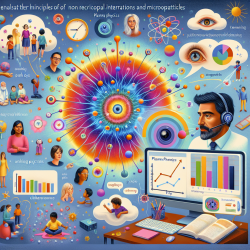Introduction to RNA Interference in Hearing Loss
Hearing impairment is the most common sensory deficit, affecting over 360 million people globally. It significantly impacts quality of life, limiting speech interpretation and language acquisition in children and leading to social isolation and economic challenges in adults. Traditional treatments like hearing aids and cochlear implants, while effective, do not restore "normal" hearing. As the hearing-impaired population grows, innovative therapeutics to prevent or restore hearing loss become crucial.
RNA Interference: A Game-Changer
Recent research, particularly the study titled RNA Interference Prevents Autosomal-Dominant Hearing Loss, highlights RNA interference (RNAi) as a promising approach to selectively suppress mutant alleles causing hearing loss. This study focuses on using artificial microRNA to slow hearing loss progression in the Beethoven mouse model, which mirrors human autosomal-dominant non-syndromic hearing loss.
Research Insights and Implications
The study demonstrates that a single intracochlear injection of artificial microRNA can significantly slow hearing loss progression for up to 35 weeks in mice. This outcome suggests the feasibility of RNAi-mediated suppression of deafness-causing alleles. The potential for microRNA-based therapeutics as a treatment for autosomal-dominant non-syndromic hearing loss in humans is substantial, given the similarity in genetic mechanisms.
Practical Applications for Practitioners
For speech-language pathologists and audiologists, integrating these research findings into practice could revolutionize therapeutic approaches. Practitioners should consider:
- Staying informed about advancements in gene therapy and RNAi technologies.
- Collaborating with geneticists and researchers to explore RNAi applications in clinical settings.
- Advocating for genetic testing in children with hearing loss to identify candidates for RNAi-based interventions.
Encouraging Further Research
While the study provides a promising outlook, further research is needed to address challenges like optimizing delivery methods, ensuring long-term efficacy, and minimizing off-target effects. Practitioners can contribute by participating in clinical trials and sharing insights from patient outcomes.
Conclusion
RNA interference represents a frontier in preventing and potentially reversing hearing loss. By embracing these innovations, practitioners can enhance outcomes for children and adults alike, paving the way for a future where hearing impairments are less of a barrier to communication and quality of life.
To read the original research paper, please follow this link: RNA Interference Prevents Autosomal-Dominant Hearing Loss.










